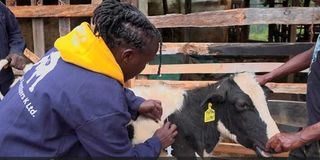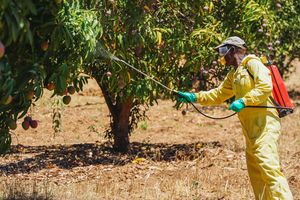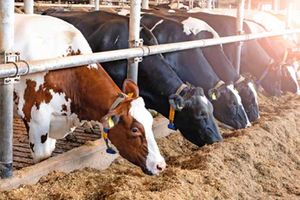
A veterinary officer treats a cow in Eldama Ravine.
It is impossible for a doctor to prepare for all the possible cases that can be found on a farm, especially if it is a mixed livestock farm.
Many times I am called to a farm for a case but I am presented with different species.
I always advise callers to let me know what animals they have on the farm and to report any cases they see, so that I can prepare properly before I go.
Unfortunately, many farmers think that the vet will carry all the necessary medicines and equipment to treat any case for any species.
Many medicines can be used across species, but there are some diseases and animals that require specific medicines and specific procedures that require specific equipment.
For example, vaccines are therapeutic products that are specially transported in cooled containers at all times.
Anyone requiring vaccination should contact me in advance so that arrangements can be made.
Once opened, most farm animal vaccines must be used on the same day. Any leftover must be disposed of.
Two weeks ago, I received a call from a farm in Kiambu. The farmer said she had a cow with a swollen front leg, and treatment had failed. It seemed to be getting worse.
She added that she had two cows that had lost appetite in the last three days.
I prepared for the two case reports and went to the farm. When I got there, Omore, the farmhand, said there were several sick animals, including pigs. He said the cow with the swollen leg could barely use it.
I decided to start with that case as it seemed to be the most serious. The cow was isolated in a pen well cushioned with sawdust. I complemented Omore for the action. The soft ground helped relieve some of the pain.
The cow could barely use its foot. It was breathing rapidly and looked very anxious. I felt the cow's pain as I remembered the injuries and infections we got as children walking barefoot to school on paths full of stones and thick, protruding roots.
A cow's foot has two toes, which we call the hoof and a heel. The hoof is synonymous with the human toe and nail. The toe has nerve endings that makes it sensitive to pain.
Because the hoof is a terminal organ, it is also well supplied with nerves to act as a sensory organ, helping the brain to assess the animal's interaction with its environment. I restrained the cow by tying its head securely. One person held the restrained head by the nose and another held the tail straight up to 90 degrees.
The animal became completely immobile for examination. I could tell it had a fever because it was giving off a lot of heat from its skin. The thermometer confirmed a fever of 41 degrees with rapid breathing.
This was a clear indication that the foot infection was releasing toxins into the blood. If left untreated, it would lead to widespread infection and death of tissues and organs, especially the liver, heart, lungs and brain.
Examination of the foot revealed an infection that had occurred when the animal had injured its heel, causing the skin to break and allowing micro-organisms to infect the wound.
I treated the cow with an antibiotic injection into the blood via the jugular vein. I injected another broad-spectrum antibiotic into the muscles. Finally, I administered a painkiller that also reduces swelling and tissue damage or inflammation. I advised Omore to wash the foot with soap and water every day, then dip it in iodine in the morning and copper sulphate in the evening for five days. I would review the cow the following day.
I checked the other two cows that had a poor appetite. Their vital signs were normal, but they had loose, chalky dung. In fact, most of the animals on the farm had loose dung, indicating a feeding problem.
The two cows were kept in the same pen. Both had a lot of fluid in their rumen.
I found that they were being fed a lot of silage and molasses. I diagnosed early digestive abnormalities due to overfeeding with carbohydrates in the silage and molasses.
I advised a reduction in the silage and molasses and withdrawal in the two cows to allow normal digestion to resume.
Omore then told me about the other cases. A cow that had been mated a week earlier had a white discharge from her vulva. I confirmed that this was a uterine infection. This is why the use of bulls in breeding is discouraged.
The bull should be disposed of as it would infect other cows.
I would later clean the infected cow with iodine as I was not prepared to do so at the time.
There were two pigs that Omore could not tell if they were pregnant. They had been artificially inseminated three months earlier.
From their appearance, they were not pregnant.
Closer examination showed that one was actually on heat while the other had been on heat a few days earlier.
Artificial insemination has a higher pregnancy failure rate than mating in pigs.
Farmers should closely monitor their animals for heat 17 to 23 days after insemination, rather than blindly waiting for the animal to show signs of pregnancy.
The next day, I was pleased to see that the cow with the infected foot had a normal temperature, the swelling and pain in the leg was reduced and she was able to put some weight on the foot.
The other two sick cows had also eaten well that day.









